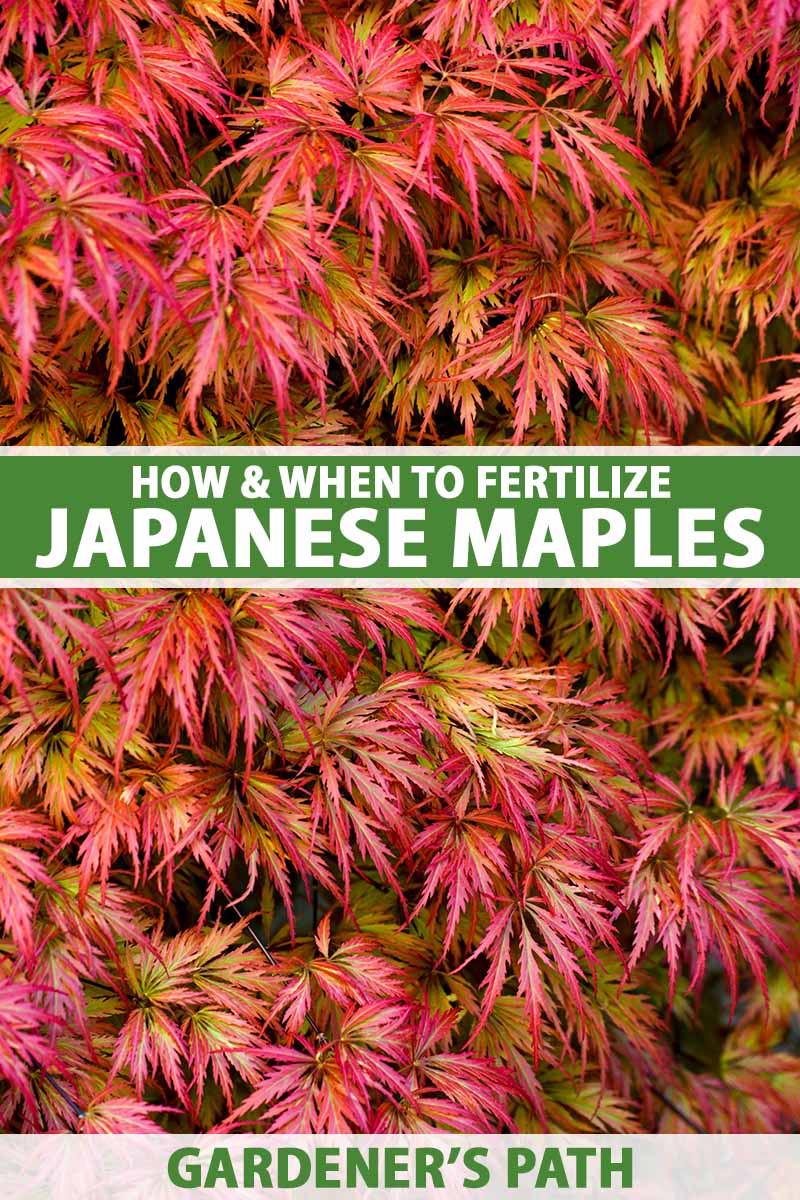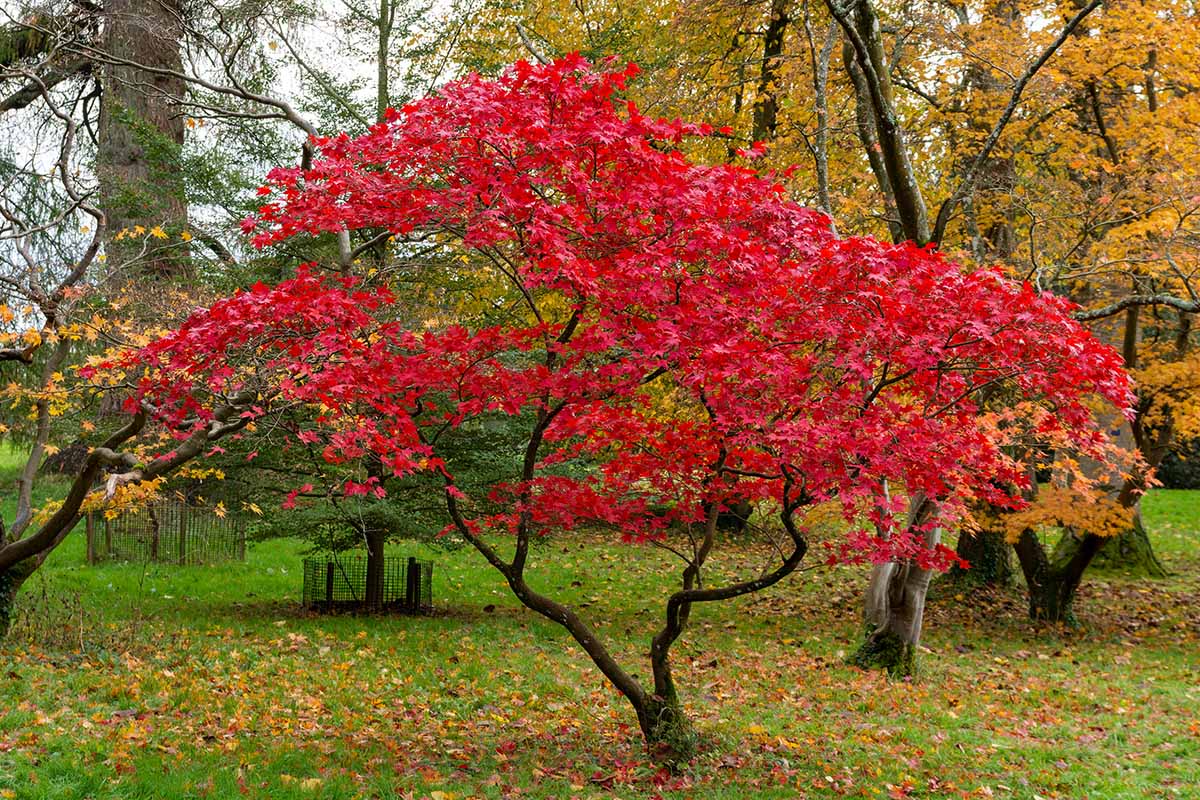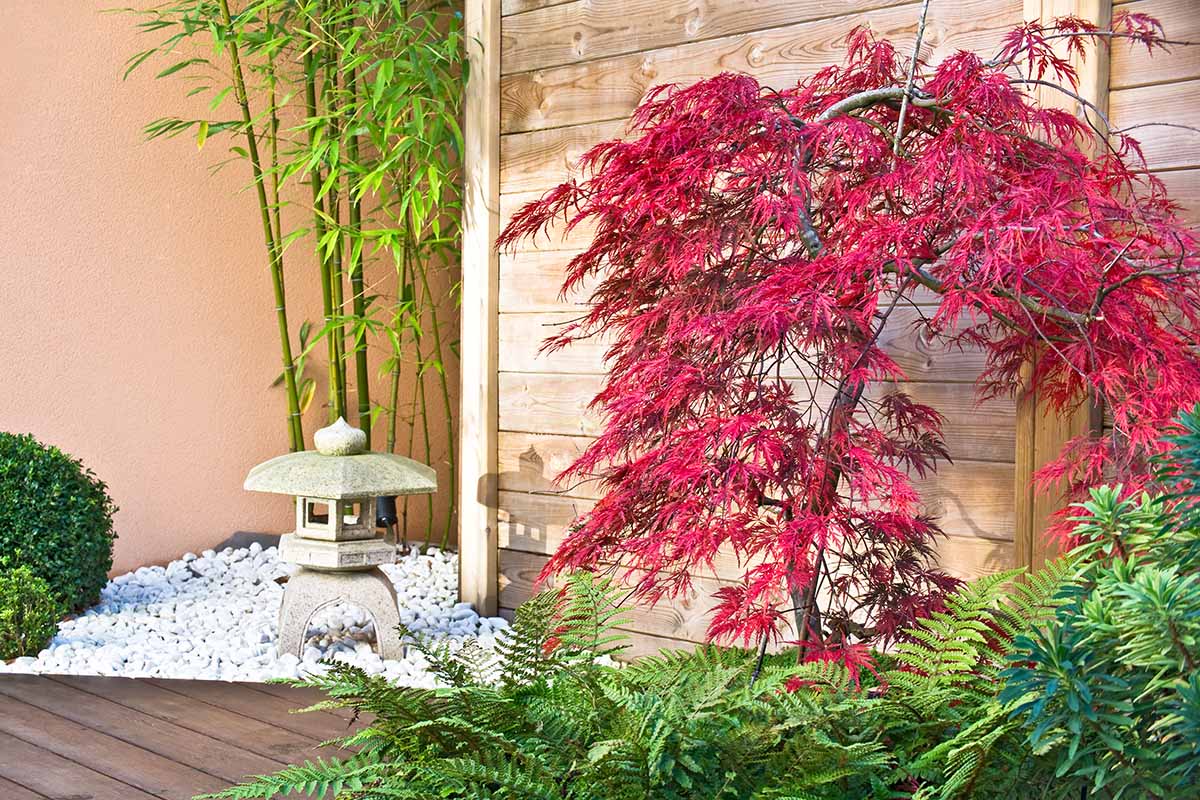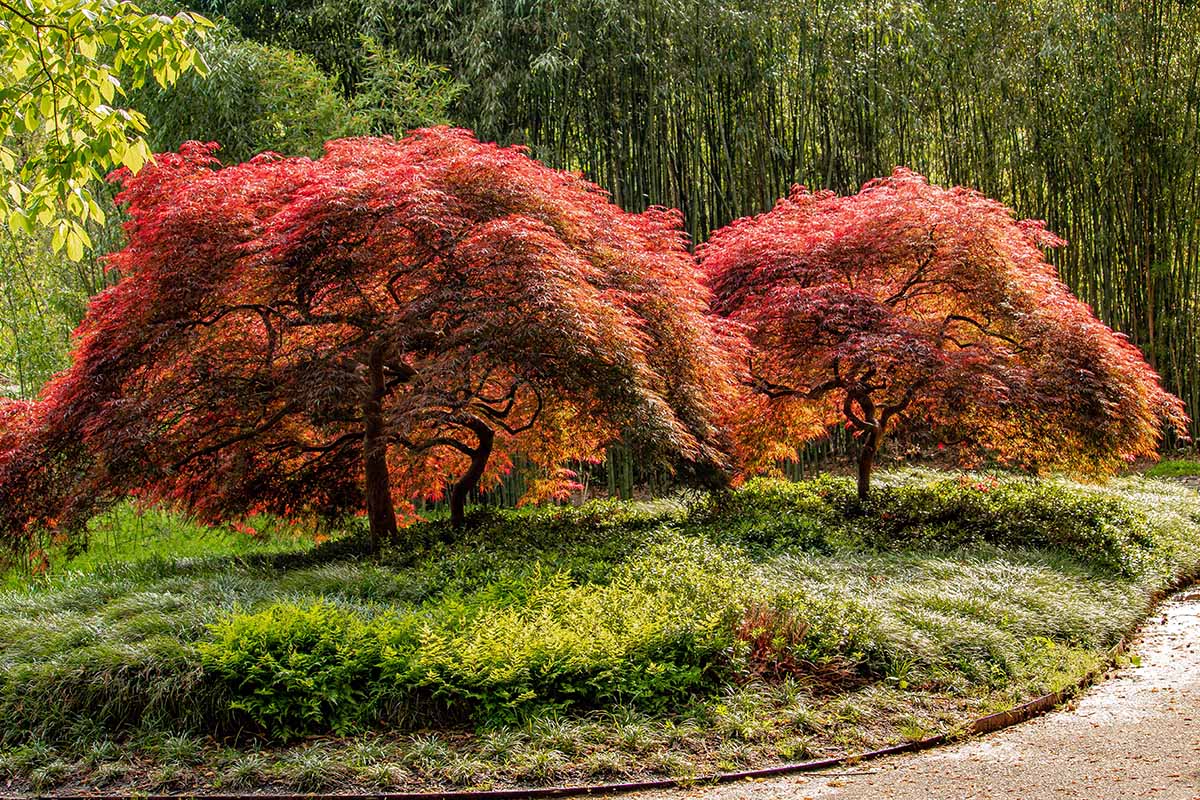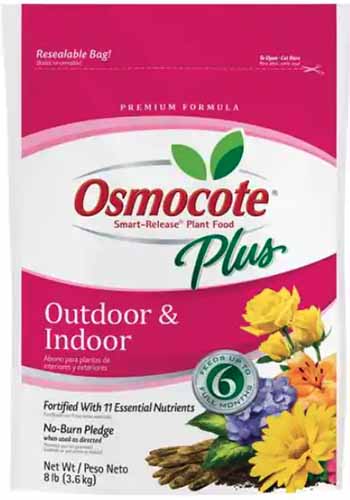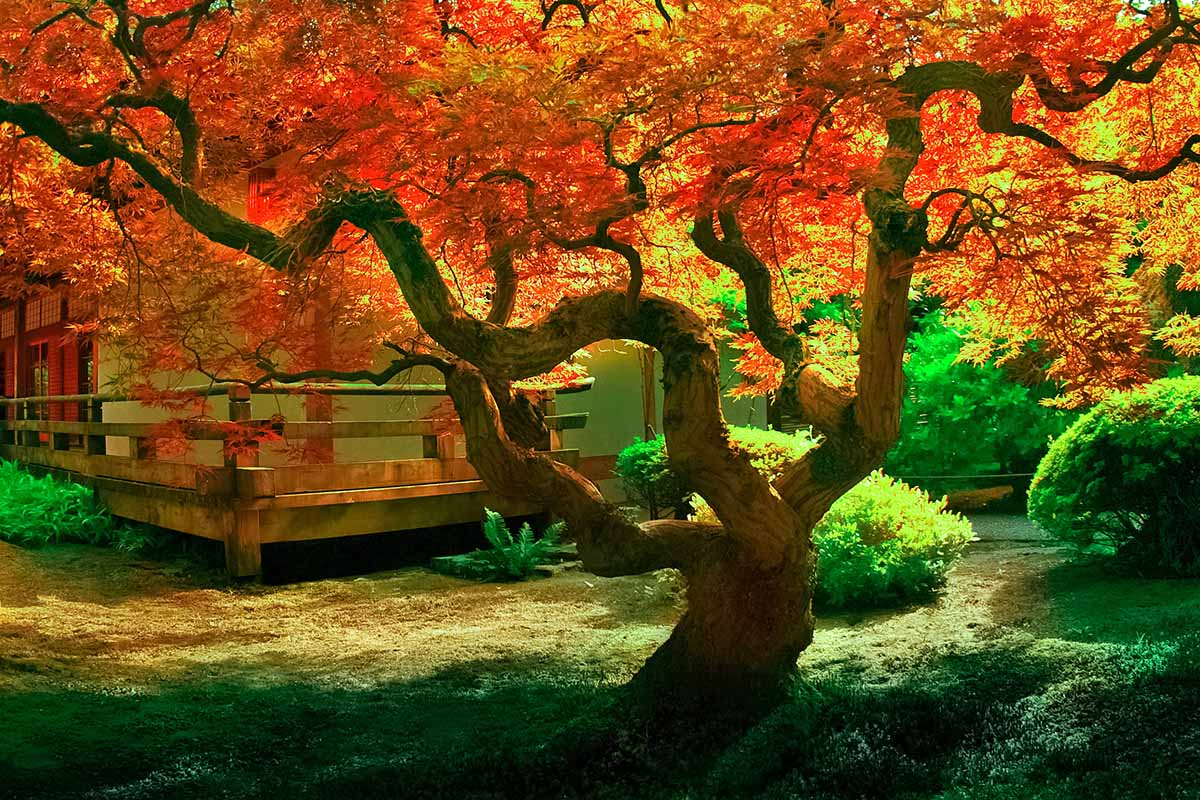But plants need to be fed as well, even the ones that aren’t carnivorous. They need nutrients that their roots can take up for use in growth and development, and some absorb nutrients chiefly through their foliage. We link to vendors to help you find relevant products. If you buy from one of our links, we may earn a commission. We’ll cover everything you need to know in order to fertilize an Acer palmatum properly. Going over the why, what, when, and how of feeding Japanese maples is sure to be a grand old time! Here’s what’s on tap for this guide:
Why Fertilize Japanese Maples?
A well-cultivated landscape can require quite a bit of work on the part of the gardener, and it’s important to understand why fertilization is beneficial to these trees before you begin. This will help keep the exasperation at bay as you add yet another task to an already long list of garden chores!
Aesthetics
A plant that’s provided with optimal nutrition will have a more pleasing appearance than it does when its nutrition is lacking. Macro- and micronutrients, as well as sunlight and water, are necessary ingredients for the growth and metabolic processes that occur inside plants. When all of these physiological functions are running smoothly, the plant isn’t lacking any of the key building blocks for developing beautiful flowers, stunning foliage, and vibrant bark. A malnourished plant, on the other hand, won’t have the resources necessary to function, so it’ll look a bit under the weather at best, or sickly at worst.
Vigor
Much like with animals, malnutrition often leads to stunted growth in plants. Certain nutrients are needed for building key molecules like proteins, ribozymes, and chlorophyll. Without these key components, healthy cell function can’t occur, and this is made apparent to us with slow, reduced growth overall.
Health
Proper nutrition also aids in disease and insect resistance. When a plant is missing essential nutrients, it perceives this as a stressor. Since biological organisms can only tolerate a finite amount of physiological stress, the stress of malnutrition leaves the plant less able to cope with infections and infestations. But when a plant has all the nutrition that it needs, it has a much better chance of successfully defending against pathogens and pests.
What You’ll Need
So you’re now on board with fertilizing – awesome! Here are some things that will help you on your quest:
Humus
Also known as organic material, humus is what’s left after plant and animal matter decays. Whether it collects in a compost pile or is simply found in nature, humus improves a soil’s nutrition, structure, ability to hold water, and cation exchange capacity. Cation exchange capacity (CEC) isn’t a measure of nutrition in the soil, but rather, a property describing its mobility, or capacity to provide nutrition to plants. These concepts sound similar, but they’re not the same thing. See, nutrients such as potassium and calcium are positively charged ions, i.e. cations, and opposites attract. In a growing medium, these cations stick to negatively charged humus particles and other types of organic matter with a very high CEC, and heavy soil particles with a high CEC, such as clay. When roots burrow through the ground, they absorb these nutrients. Sandy soils, on the other hand, have a very low CEC. The more humus there is in the soil, the more positively-charged nutrients the soil can hold onto, and the greater the amount that a plant can absorb from said soil. But there’s a subtle difference here from how many nutrients are actually present – what we’re talking about is nutrient mobility, as opposed to total nutrient content. Keep in mind that CEC has no bearing on negatively charged ions, or anions, such as nitrates. These forms of nitrogen are taken up by plants as well. But the ability to exchange anions, since they’re negatively charged ions, isn’t relevant to calculating CEC. Negatively charged plant nutrients aren’t readily attracted to soil particles, but they’re readily carried away by rain and supplemental irrigation. Well, except for phosphorus. It has a negative charge but it’s not readily water soluble. Nonetheless, it can still bind with soil particles and move with runoff. All this to say, humus is important. Compost, well-rotted manure, and peat moss are all examples of humus that you can add.
Fertilizer
Fertilizer allows gardeners and farmers to add nutrients directly to the soil thoughtfully and meticulously. This is ideal for when the growing medium has a specific deficiency that you’re trying to resolve, and as it becomes naturally depleted over time. Those negatively charged nutrients will move readily through soil, and positively charged nutrients will also move quickly through sandy soils and other types that are devoid of organic material, with a low CEC. There are two types of fertilizers for gardeners to choose from: organic and synthetic. Organic fertilizer uses naturally occurring materials, such as bone meal, kelp meal, and bat guano. These organic fertilizers have the fringe benefit of often providing secondary and/or trace nutrients that are also naturally present, which’ll help in providing balanced nutrition to your trees and other plants. Synthetic fertilizers also provide nutrients, but in the form of mined or manufactured compounds such as potassium nitrate and ammonium phosphate. These products are great at providing plant macronutrients – readily bioavailable forms of nitrogen, phosphorus, and potassium (NPK) – but don’t typically offer much in the way of secondary (or macro-) and trace nutrients such as calcium and iron. This can lead to potential toxicities as well as deficiencies. It’s best to go with organic over synthetic, when possible. Synthetic fertilizers tend to have a nasty side effect of disrupting the soil microbiome, meaning all those beneficial microscopic organisms that are present won’t be able to lend their tiny helping hands in keeping your garden healthy. Organic fertilizers, on the other hand, provide nutrition without harming said microorganisms. Do this by breaking up the soil, adding the humus, then mixing it all up via cultivation. This amendment will improve soil texture and porosity while boosting nutritional content and aiding nutrient mobility. How will you be able to fertilize properly without knowing what’s lacking, if there are issues afoot? For the opinion of a pro, enlisting the help of university extensions or professional services is the way to go. Luster Leaf Soil Test Kit
When and How to Feed Your Trees
Before you plant or transplant a Japanese maple, make sure you add two to four inches of organic material – particularly if a soil test deems it necessary – into the soil around the planting site. Don’t fertilize an A. palmatum during its first growing season after planting. The roots won’t be established, or developed enough for them to adequately uptake the sudden flush of nutrients. Your trees will be better off if you wait a year to provide any supplemental food. For most trees, the radius of the root zone increases by about 18 inches for every inch of trunk circumference. For each annual round of general feeding, you can go the humus route, or the straight-up fertilizer route. If you opt for humus, you’ll want to work two to four inches of an organic material such as well-rotted manure or compost into the soil above the root zone. For the commercial fertilizing option, Osmocote offers a slow-release, 19-6-12 (NPK) granular fertilizer in eight-pound bags that’s available at The Home Depot. Osmocote Plus Smart Release Plant Food It’s suitable for feeding these trees because it’s fortified with 11 essential plant nutrients and guaranteed not to burn plants – when applied according to package instructions. Need to figure out where your tree’s root zone is? Critical roots typically run just outside the drip line, or the perimeter line where water might drip from your tree’s canopy when it rains. For something a bit more exact, you can roughly map out the root zone with some simple math: Grab a tape measure and take the circumference of the trunk in inches from about four feet above the ground. Divide this number by π (~3.14) to get the diameter of your tree’s trunk, then multiply the product of that calculation by 18. Divide the resulting value by 12 to convert from inches to feet, and you have the radius of the root zone extending away from the trunk in feet. With that number in mind, measure out the radius value from the trunk four times, with each measurement at a 90° angle from the next like the four cardinal directions on a compass. Draw arcs connecting the four points – the resulting circle is your root zone. If the foliage of your Japanese maples is sporting some sickly-looking chlorosis – a common sign of a manganese, zinc, or iron deficiency – or you suspect another nutritional deficiency of some kind, a soil test will reveal the specific nutrients that are lacking. They can usually be supplemented piecemeal, but the need for this is highly unlikely, since A. palmatum typically doesn’t need a ton of fertilizing. In fact, going too hard with the supplementation may cause over-fertilization, which comes with its own host of issues such as leaf browning and foliar burn. Interestingly enough: manganese, zinc, or iron deficiencies in maple are more readily solved in the long-term by lowering the pH of the soil, since these minerals aren’t as available in alkaline soils. A. palmatum is a beautiful tree, and it deserves to look its best and be at its healthiest. And now, you have the power to help this Acer along in this way. How cool is that? Any remarks or questions can go in the comments section below! I’d love to read what you all have to say. For even more Japanese maple know-how, enjoy reading these guides next:
21 of the Best Japanese Maple VarietiesA Guide to the Different Types of Japanese Maple Trees13 of the Best Companion Plants for Japanese Maple Trees
